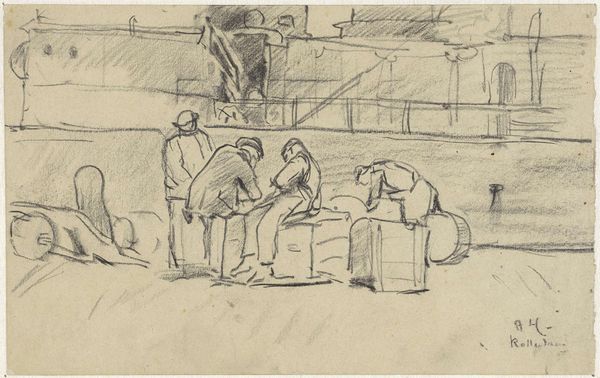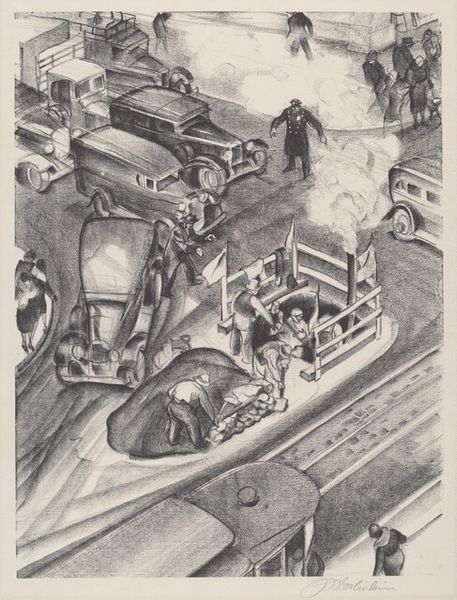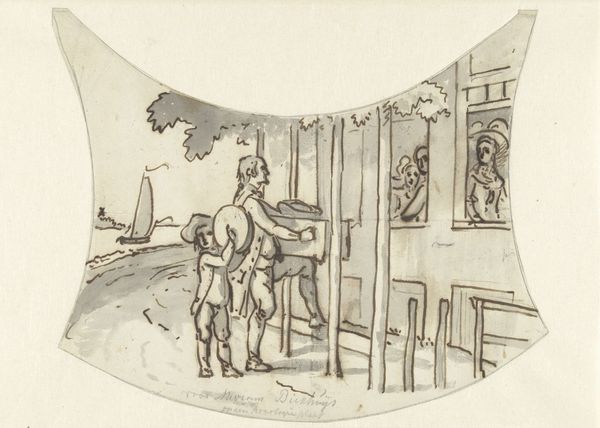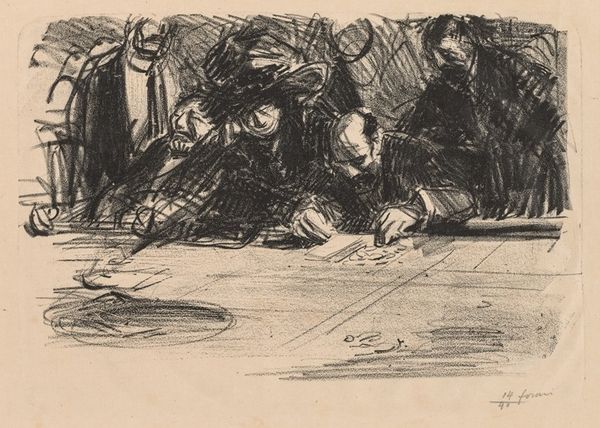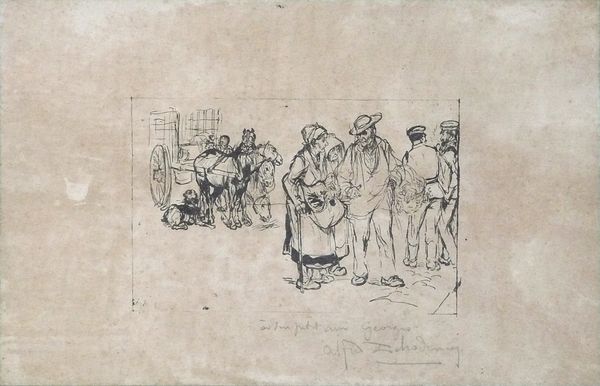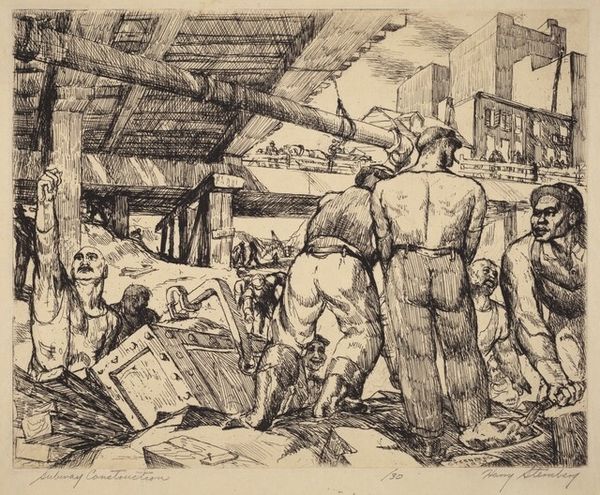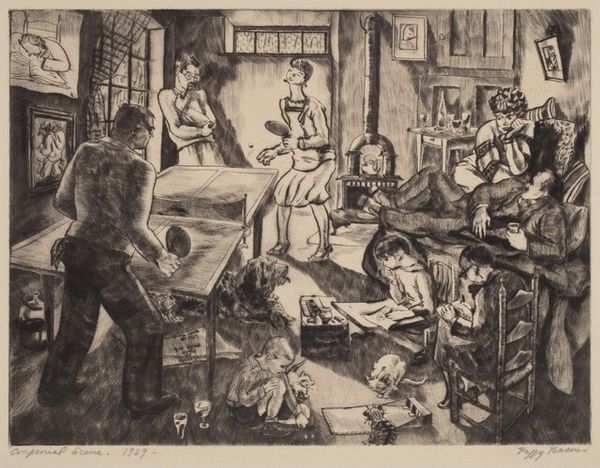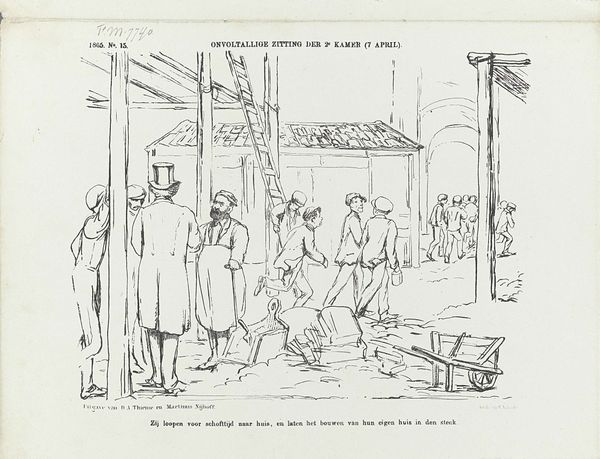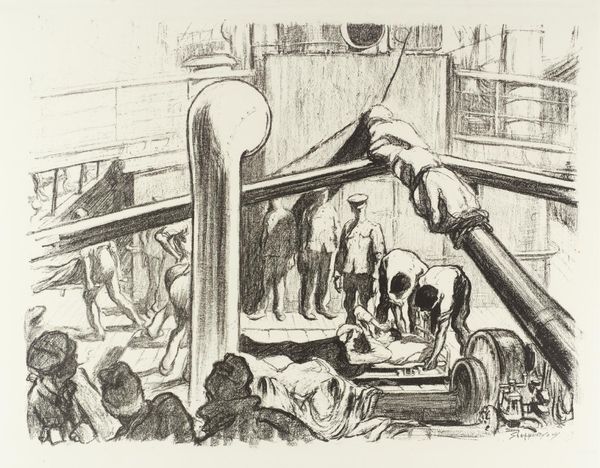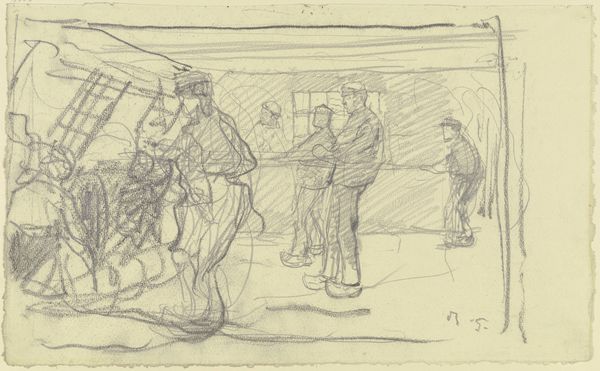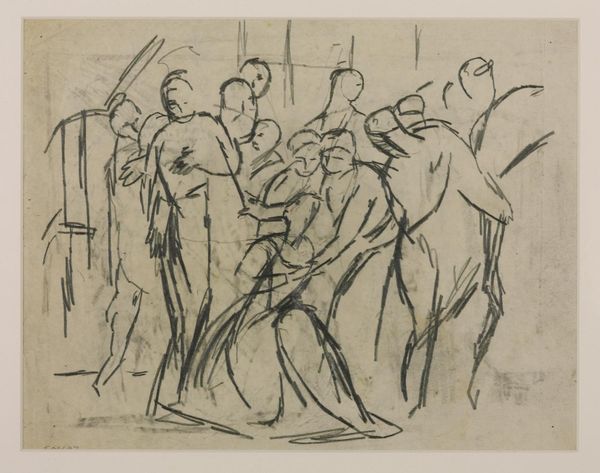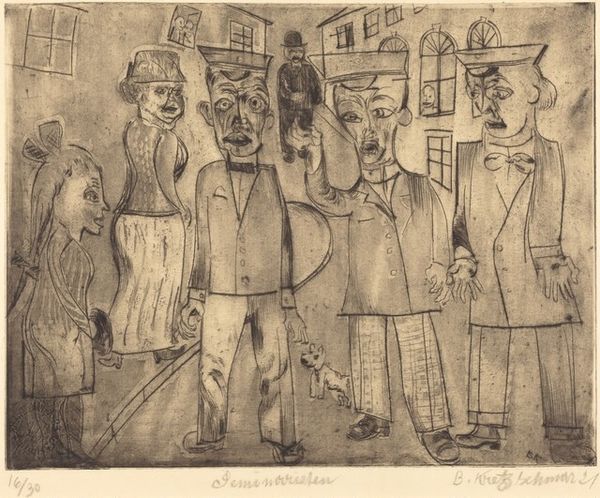
drawing, print, graphite
#
drawing
# print
#
social-realism
#
ashcan-school
#
graphite
#
cityscape
#
genre-painting
#
realism
Dimensions: Image: 175 x 225 mm Sheet: 242 x 288 mm
Copyright: National Gallery of Art: CC0 1.0
Curator: Let’s take a closer look at Helen Ludwig’s “WPA Workmen,” created in 1931. It's a graphite drawing, showcasing a group of workers seemingly engaged in some kind of street repair. Editor: Immediately, I’m struck by a sense of gritty realism. It feels unpolished and direct, almost like a snapshot of a tough time. The muted tones amplify the scene's somber mood. Curator: The Ashcan School influence is palpable. It echoes the tradition of depicting everyday life, the struggles and stories of the working class, even celebrating the dignity of labor through art. Editor: Absolutely, and it invites considerations of class and labor rights. Seeing "WPA Workmen" also makes me think about labor movements. I feel its resonance through the symbolism of ordinary workers in the public eye, reminiscent of a period filled with worker empowerment. Curator: There’s something timeless in this image. Consider the WPA title – a symbol in itself – of the collective effort toward societal progress. Note, too, the car in the scene, a budding status symbol contrasted against physical labor. Editor: It highlights a compelling socio-economic tension. Who gets to ride in the car, and who toils in the streets? This artwork provides valuable perspectives into class disparity and infrastructure equity, as those issues play a significant part in society's symbolic frameworks. Curator: Yet beyond politics, the piece itself captures the collective spirit, each figure an individual merged within a unified whole, a representation of working communities who kept society afloat. I read this through the psychological and historical symbols represented. Editor: I think the social realism and gritty representation are important symbols here. Even small choices can indicate identity. Ludwig seems aware of the narrative power in realism. Curator: Exactly, it's a potent blend of direct observation, symbolism, and contextual undertones. Editor: Definitely leaves you contemplating. Thank you for offering so much historical background and interpretation! Curator: A fascinating picture indeed!
Comments
No comments
Be the first to comment and join the conversation on the ultimate creative platform.
